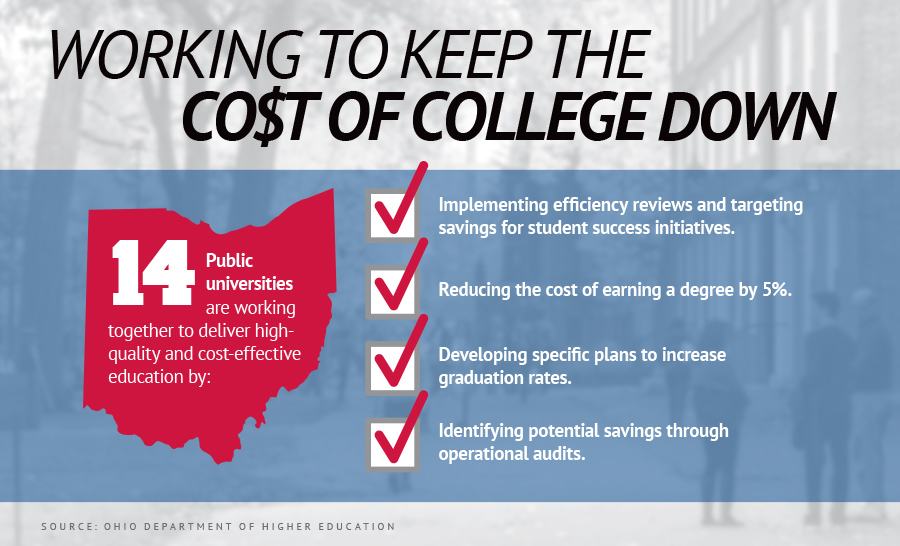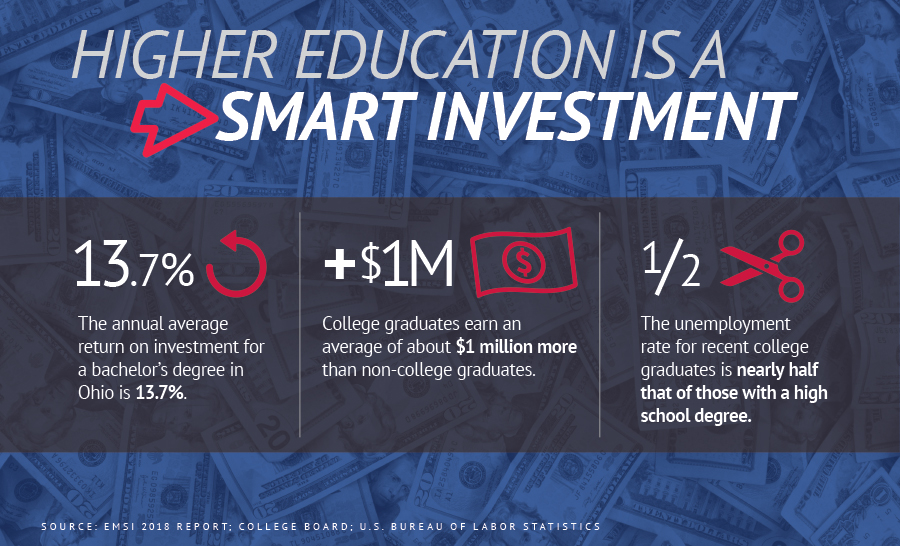
Ohioans value public universities; higher ed benefits abound
 Eighty-nine percent of Ohioans want their children or grandchildren to go to college.
Eighty-nine percent of Ohioans want their children or grandchildren to go to college.That vote of confidence in higher education is one of many positive statements found in a recent poll of likely voters in Ohio.
To share more information about higher education opportunities in Ohio, stories and statistics are found on a new website, ForwardOhio.org, supported by Ohio’s 14 public four-year universities, including Miami.
The importance of a post-high school certificate or degree is exemplified in numerous studies showing economic impact on communities and earning power for individuals, among other benefits. Ohioans proved their understanding of that and showed their confidence in state higher education with responses such as these:
* 82 percent say the quality of education at Ohio’s public universities is as good as, or better than, the quality of others nationally.
* 85 percent agree that a four-year degree from a public university in Ohio prepares students for a good job in today’s economy.
The bad news is that actual completion of post-high school certificates or degrees is well below where studies indicate Ohio needs to be. It’s estimated about 66 percent of jobs in Ohio in 2025 will require postsecondary certificates or above. Today, just 44 percent of
 Miami University continues to evolve to meet workforce needs, by reviewing and updating academic programs, adding online degrees and holding down tuition.
Miami University continues to evolve to meet workforce needs, by reviewing and updating academic programs, adding online degrees and holding down tuition. Ohio public universities produce the majority of skilled workers in the state. With this awareness, the public can support the need to maintain our strong system of public higher education. State leaders say closing the alarming higher education gap is crucial to meeting the economic and workforce needs of our business community.
Forward Ohio’s website illustrates how all of Ohio’s public universities are addressing the attainment gap and providing significant value to the state. It also provides evidence on the critical need for more skilled workers and how enhanced state investment and policy reforms can further assist public universities in closing the attainment gap. It also provides opportunities for citizens to advocate for enhanced governmental support of higher education.
